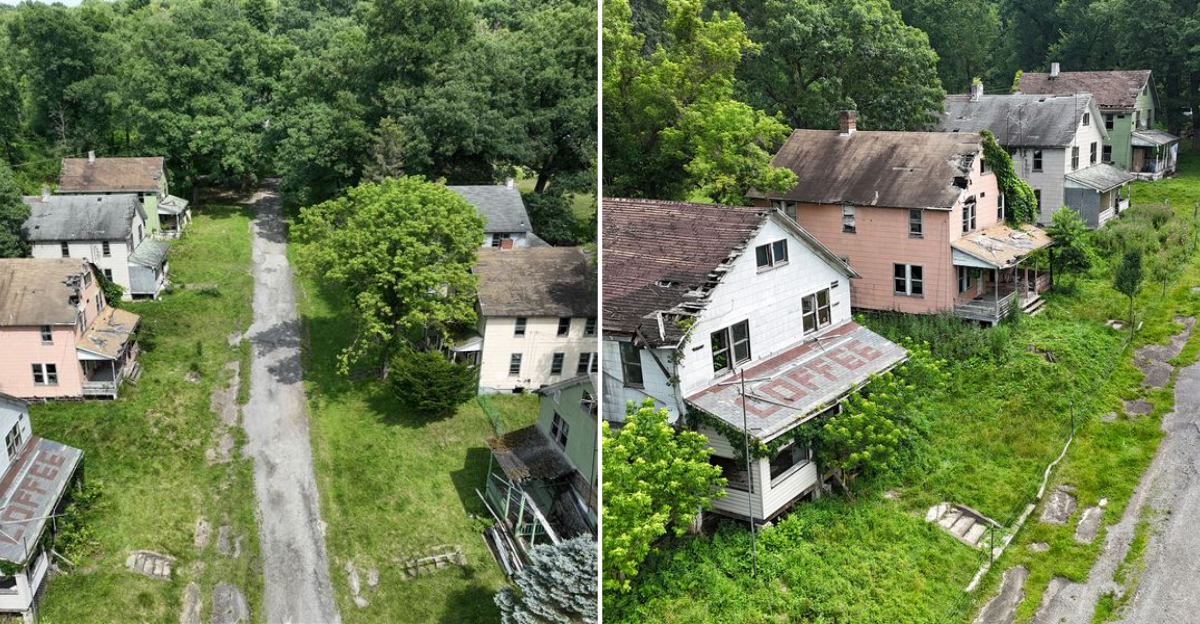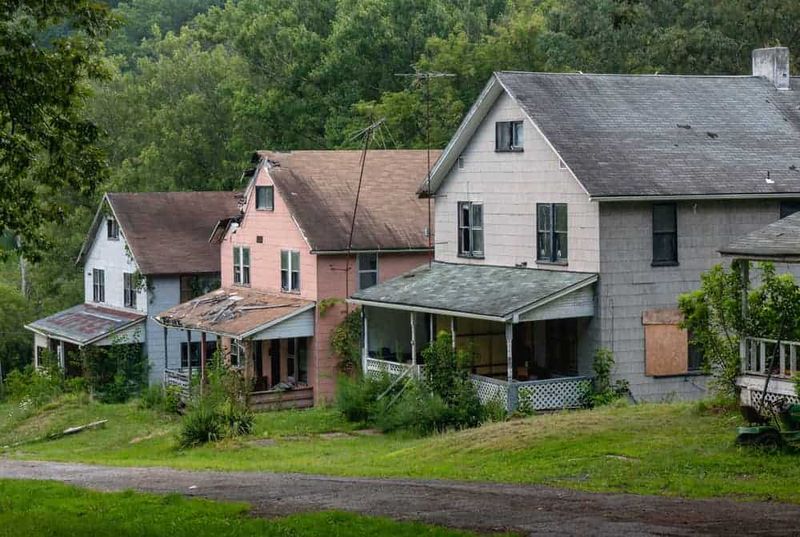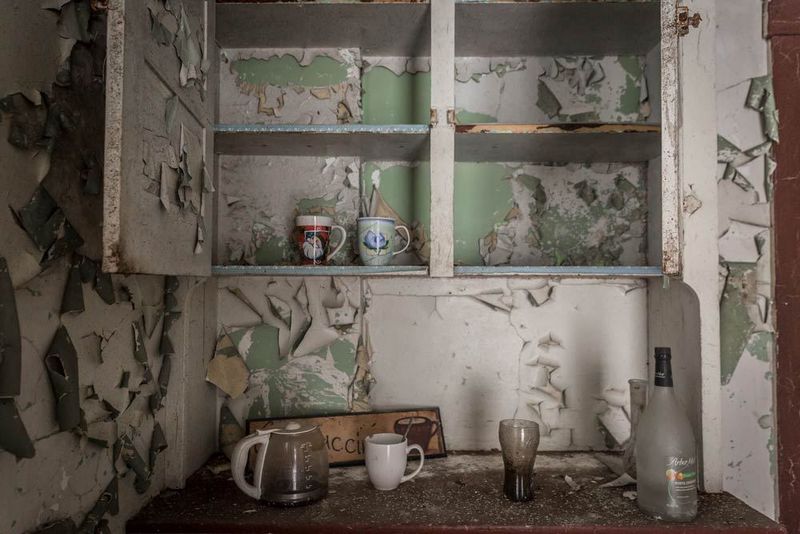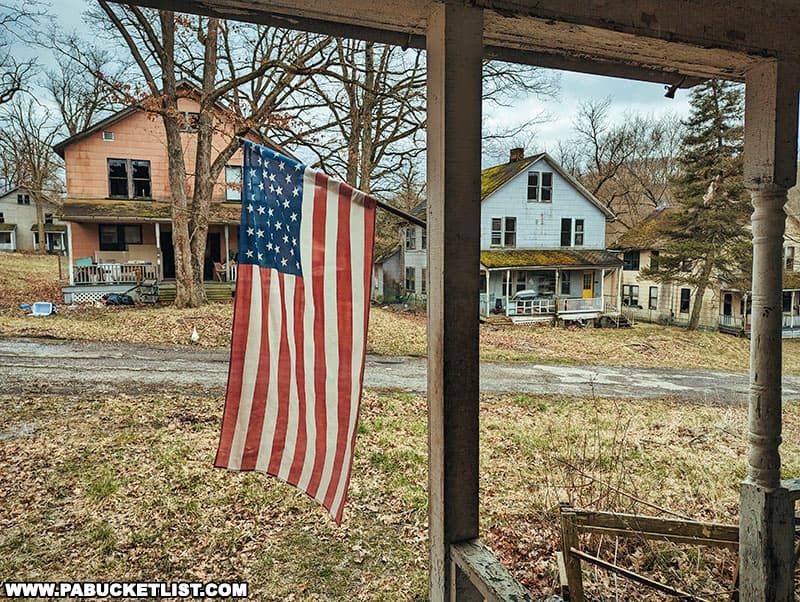The Abandoned Pennsylvania Village That Time Forgot

Deep in Armstrong County, Pennsylvania, sits a place that looks like everyone just walked away one ordinary afternoon and never came back.
Yellow Dog Village, located near Worthington, Pennsylvania, is a collection of roughly two dozen homes built in the early 1900s for limestone quarry workers, now standing silent and still.
Walking through its empty streets feels like stepping into a black-and-white photograph where clocks stopped ticking decades ago.
A Forgotten Company Town Frozen in Time

Born in the bustling early 1900s, Yellow Dog Village sprang up as a limestone quarry company town, where workers and their families carved out lives from rock and sweat.
About 19 duplexes and several single-family homes lined the dirt roads, each filled with laughter, laundry lines, and the clatter of dinner plates after long shifts at the quarry. But boomtowns rarely stay booming forever.
When the quarry work dried up and industrial demand shifted elsewhere, families packed their belongings and drifted away like dandelion seeds on the wind. What remains today is a remarkably preserved snapshot of working-class Pennsylvania, minus the people who once filled it with life.
Built by the Pittsburgh Limestone Company for Its Workers

Company towns weren’t built out of generosity, they were business decisions wrapped in wooden siding. The Pittsburgh Limestone Company constructed Yellow Dog Village near Worthington to keep workers close, loyal, and productive without the hassle of long commutes or housing shortages.
Every home followed the same blueprint: simple two-story structures with just enough room for a family and their modest belongings.
Cookie-cutter architecture meant cheaper construction and easier maintenance. The village operated like a self-contained bubble where the company controlled not just your paycheck, but also your roof, your neighbors, and sometimes even where you shopped.
Its name came from “yellow dog contracts,” agreements that prevented workers from joining labor unions, a reminder that company loyalty wasn’t optional.
A Quiet Decline After the Mines Fell Silent

Mid-century brought whispers of change that eventually turned into shouts nobody wanted to hear. The limestone industry stumbled, production slowed to a crawl, and Yellow Dog Village changed hands more times than anyone could track, each new owner less invested than the last.
By the late 20th century, the village was nearly empty. Water system contamination, specifically an E. coli outbreak in the early 2000s, forced out the last remaining residents around 2009.
Families who’d stubbornly held on finally surrendered to reality and moved somewhere with running water and hope. The last residents left behind more than just buildings, they abandoned an entire way of life.
Preserved Like a Time Capsule of Mid-Century Life

Walk into certain homes and you’ll find dinner plates still stacked in cupboards, children’s toys scattered across dusty floors, and calendars frozen on months from decades past. While not every house remains fully intact, some interiors still contain authentic mid-century furnishings and personal items.
It’s unsettling and fascinating in equal measure, like interrupting a family meal where everyone vanished mid-bite. Urban explorers and history buffs have documented these eerie interiors, snapping photos of vintage furniture slowly rotting beneath collapsed ceilings and faded wallpaper.
Old signage still clings to walls, and personal belongings tell silent stories about the people who once called this ghost town home. Time didn’t just forget Yellow Dog Village, it preserved it like a bug trapped in amber.
A Legal Destination for Urban Explorers and Photographers

Here’s where Yellow Dog Village breaks the mold: you won’t get arrested for trespassing if you follow the rules. Unlike most abandoned sites where “No Trespassing” signs mean business, the current property owner allows limited access through guided tours and scheduled photography sessions.
Visitors must request permission in advance through official channels. Permission is required, no exceptions. Guided tours and scheduled photography sessions keep vandalism at bay while allowing people to witness this slice of forgotten history firsthand.
It’s a rare opportunity to legally wander through decay without looking over your shoulder for angry landowners or police cruisers. Just remember: look, photograph, but don’t touch or take.
Efforts to Save What’s Left of Yellow Dog

Preservation enthusiasts have rallied around Yellow Dog Village like protective parents refusing to let their child fade away. Local groups and history lovers have poured time and resources into stabilizing crumbling structures, boarding up vulnerable entry points, and chasing off vandals who see empty buildings as playgrounds.
The goal isn’t restoration to pristine condition, that ship sailed long ago. Instead, efforts focus on controlled decay: keeping roofs from collapsing entirely, preventing graffiti artists from ruining walls, and maintaining the village as an outdoor museum of industrial history.
It’s a delicate balance between letting nature take its course and not letting everything crumble into complete oblivion. Preservation work continues under private ownership, with proceeds from tours helping fund maintenance efforts.
A Haunting Reminder of Pennsylvania’s Industrial Past

Pennsylvania built its backbone on coal, steel, and limestone, industries that promised prosperity but delivered boom-and-bust cycles that shattered communities. Yellow Dog Village stands as a three-dimensional history lesson about what happens when the jobs disappear and economic winds shift direction.
Rusting mailboxes still bear faded family names. Empty porches sag under the weight of decades. Streets that once echoed with children’s laughter now host only birdsong and wind rustling through broken windows.
This isn’t just abandoned real estate, it’s a monument to blue-collar dreams that flourished briefly before withering on the vine, leaving behind only architectural ghosts and memories painted in peeling paint.
